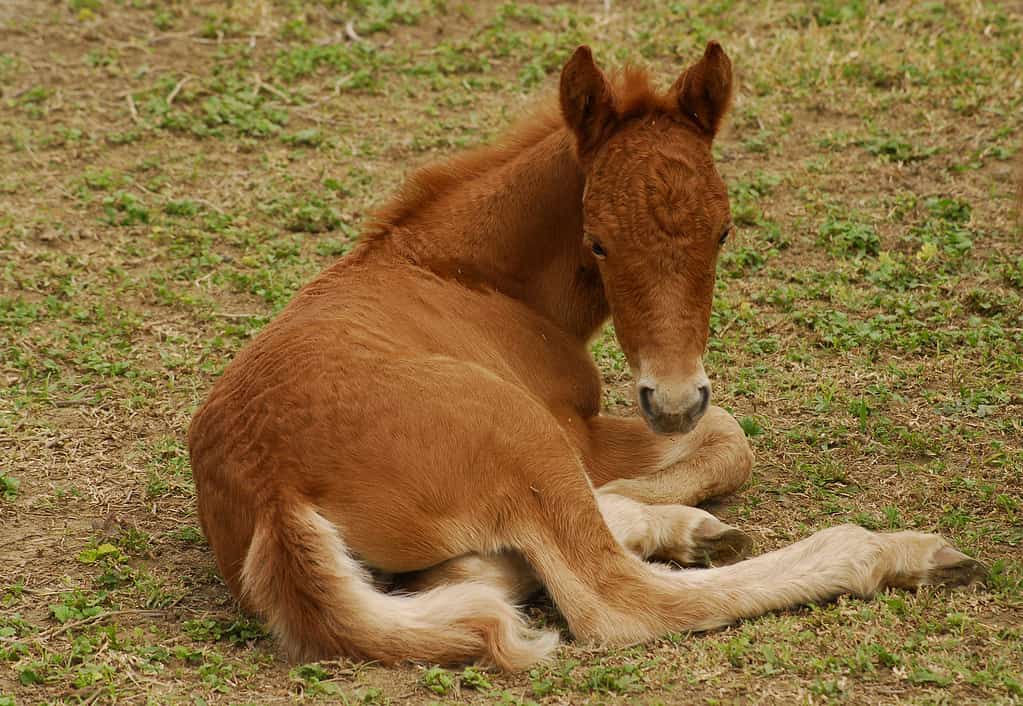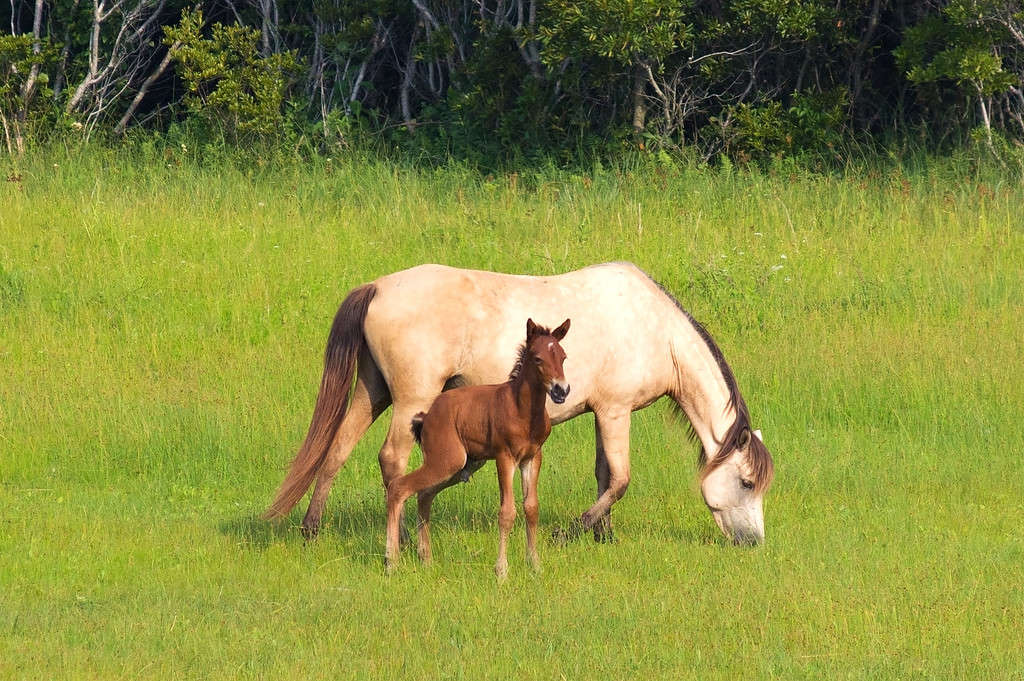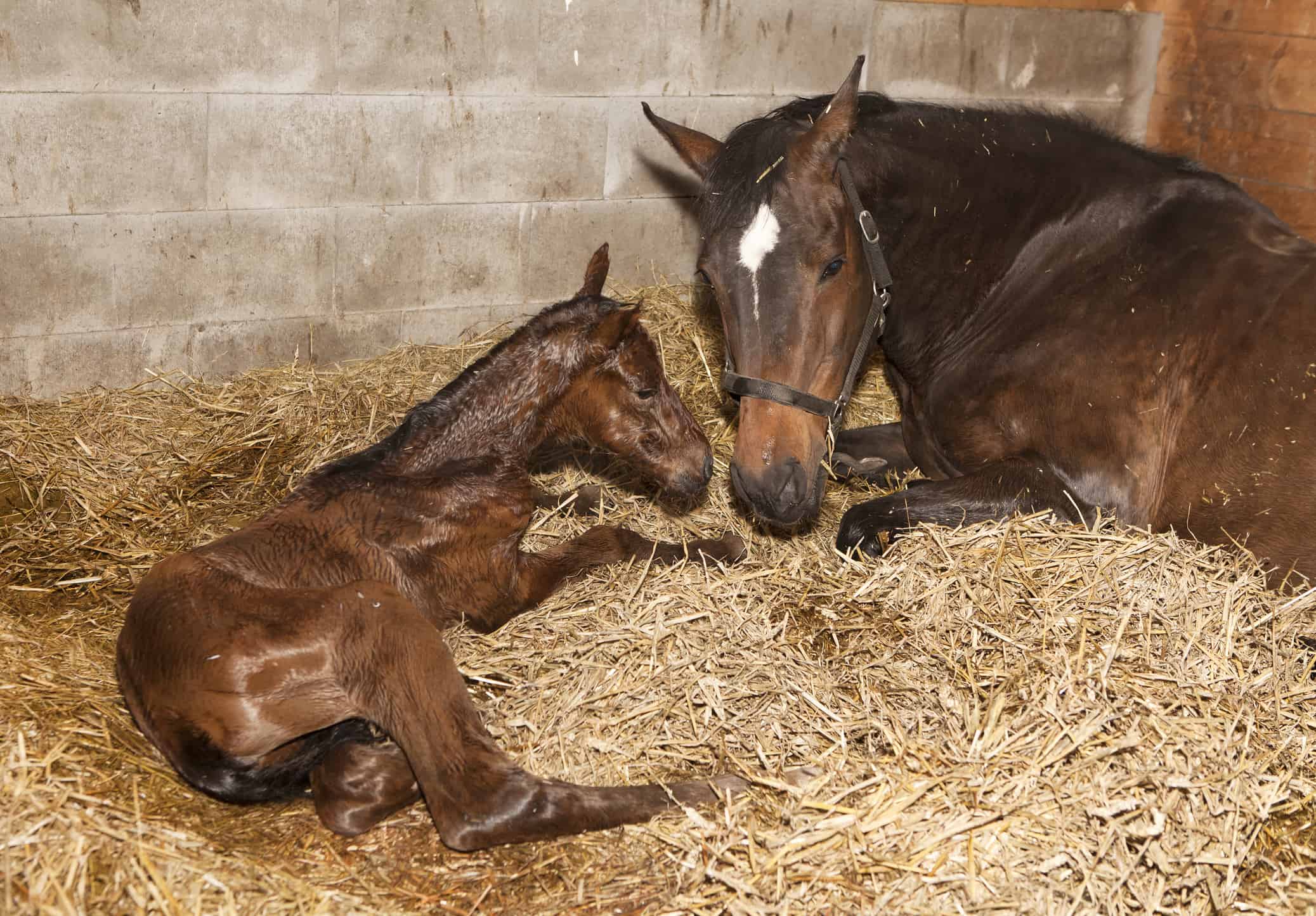Horses are one of many hooved animals that roam planet Earth. While you might have seen an adult horse’s hooves before, you may not have laid eyes on a foal hoof. If you didn’t know that there was a difference between the two then you’re in for a treat! It’s time to discover what’s really up with newborn horse hooves and why they look just a little different than most.
What Are Newborn Horse Hooves Called?

Foals only have the eponychium on their hooves for a few days since it begins to fall off naturally when exposed to air.
©marinat197/Shutterstock.com
When a foal is born, their hooves don’t look the same as their dam or sire. Adult horses sport hard hoof capsules that protect the inner tissues and bones. On the other hand (or should we say hoof), newborn horse hooves are feathered and soft! You might hear people call them “fairy fingers” or “foal slippers.”
We can see why! The outer layer of the hoof — the part that’s hard in adult horses — is soft and flexible. It looks like the foal is wearing the most comfortable (and strangest) pair of slippers. Rubbery to the touch, you can see just how different their hooves are from adult horses when you turn them over. Underneath, the finger-like protrusions make newborn horse hooves look otherworldly.
But they don’t stay that way for long. As the foal takes its first steps, its soft slippers transform into sturdy hooves. But why do they look like that when they are just born?
Why Do Newborn Horse Hooves Look Like That?

A foal’s hooves look a little different than an adult horse’s… and for good reason!
©Arabesk at Dutch Wikipedia / CC BY-SA 3.0 – Original / License
Newborn horses have eponychium — soft, finger-like coverings over the sharp edges of their hooves — to protect the dam’s uterus and birth canal during pregnancy and birth. If you’ve ever wondered how (most) hooved animals give birth without hurting themselves, this is how! Nature created a way, as it always does.
For additional protection, a foal hoof looks more like a cone rather than the typical rounded horseshoe shape you might be thinking of. The front part of the toe is the narrowest and it widens as it reaches the coronary band. As the foal develops, it gradually grows into the shape we’ve come to associate with horse hooves today.
While newborn horses aren’t the only animals that are born with this unique feature, it is the most pronounced on equines. What kind of animals share this physical characteristic when they are born? Other ungulates like cows, deer, and rhinos.
What Are Foal Hooves Made of?

Underneath the soft capsule covering a foal’s hooves lies a hard hoof. Newborn horses have the entire hoof structure of an adult horse, but it takes time to mature into the horseshoe shape as we know it.
©VivecaVenegas/iStock via Getty Images
Now that you know what you’re looking at, let’s talk about what newborn horse hooves are made of.
Foals are born with eponychium, which is made up of a gelatinous perioplic membrane. This soft, rubbery, and flexible hoof layer is necessary to protect the foal’s dam from trauma when giving birth. People often describe the look of the finger-like coverings as wet feathers stuck together.
When the foal’s hooves are exposed to air, the soft capsule protecting the hoof begins to dry out and harden, eventually falling off naturally. The eponychium does not prevent newborn horses from walking. In fact, it wears off quickly just by the foal walking around!
Can Foals Walk Right After Birth?

Yes! Newborn horses can walk almost immediately after birth, even with the eponychium on their hooves.
©amedved/iStock via Getty Images
The eponychium present on all newborn horse hooves is known as the deciduous hoof capsule. This means that the feathered fingers on foal hooves are shed at a particular stage of their development. In this case, that stage is once they start walking! The hoof capsules are soft, so they often wear down within 24 hours and disappear completely after about three days.
Equines can get up and walk immediately after birth thanks to evolution. As prey animals, wild horses need to be able to escape from predators at any moment. The ability to quickly shed the soft outer layer of the hoof to reveal the hard capsule below allows them to do just that!
Horses are incredible animals that have nature to thank for their unique features as foals. While their fairy slippers aren’t permanent — it only takes a few hours of the foal walking around to shed them — don’t you kind of wish they were?
Thank you for reading! Have some feedback for us? Contact the AZ Animals editorial team.








